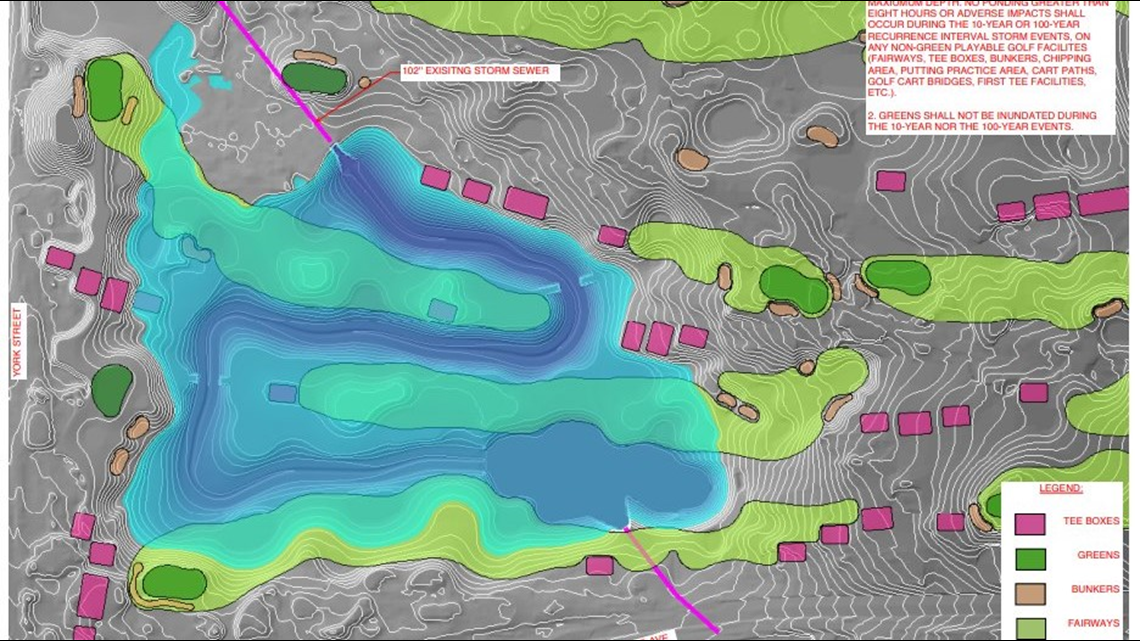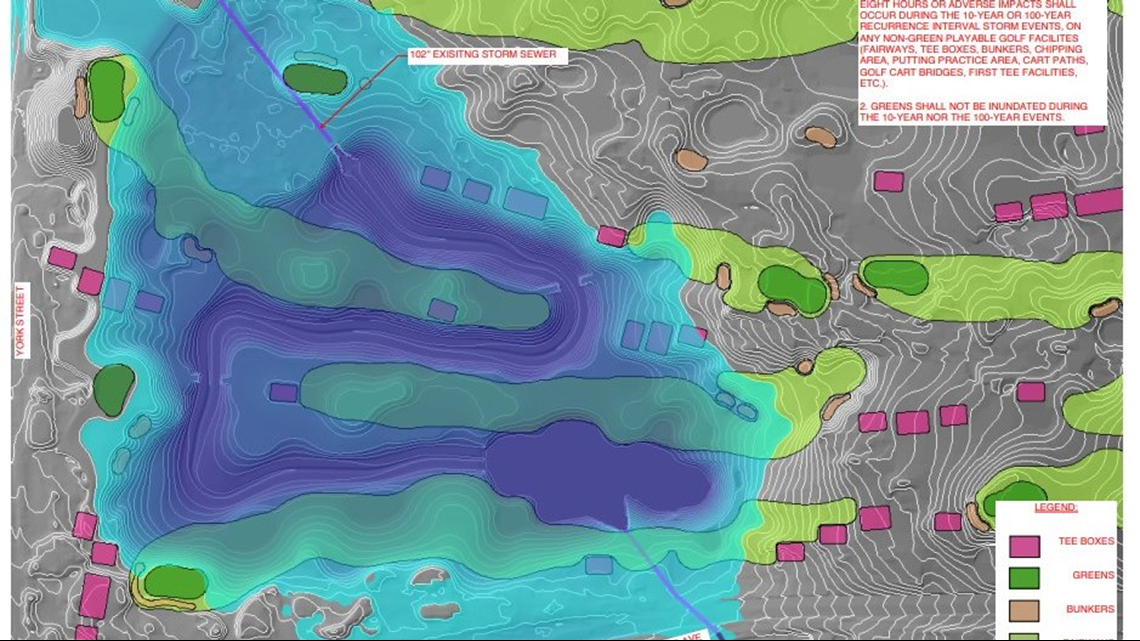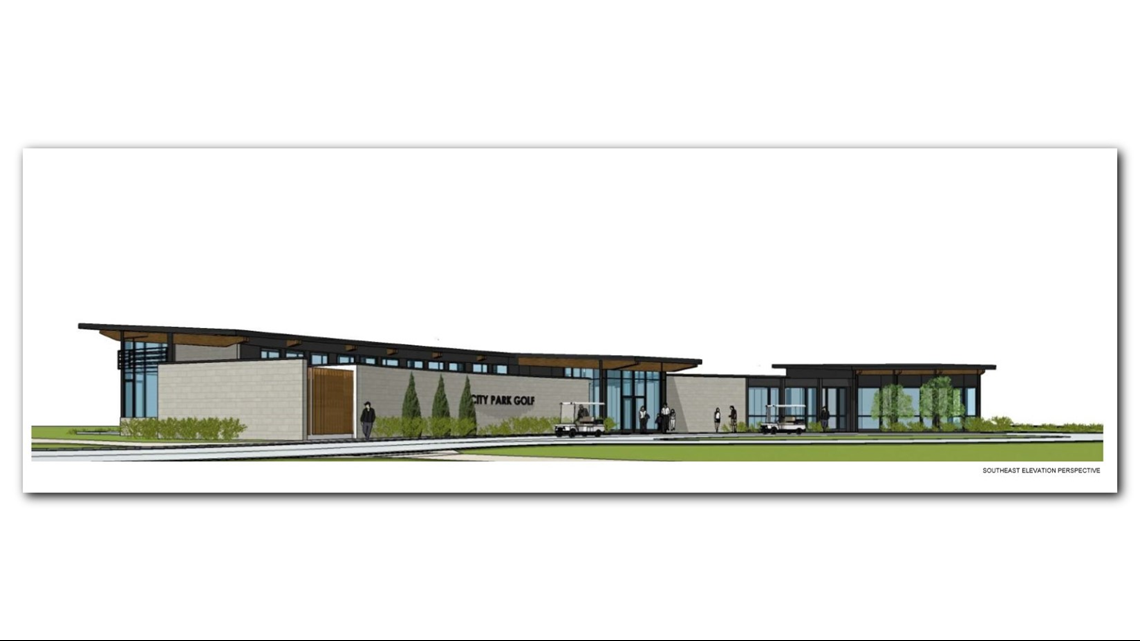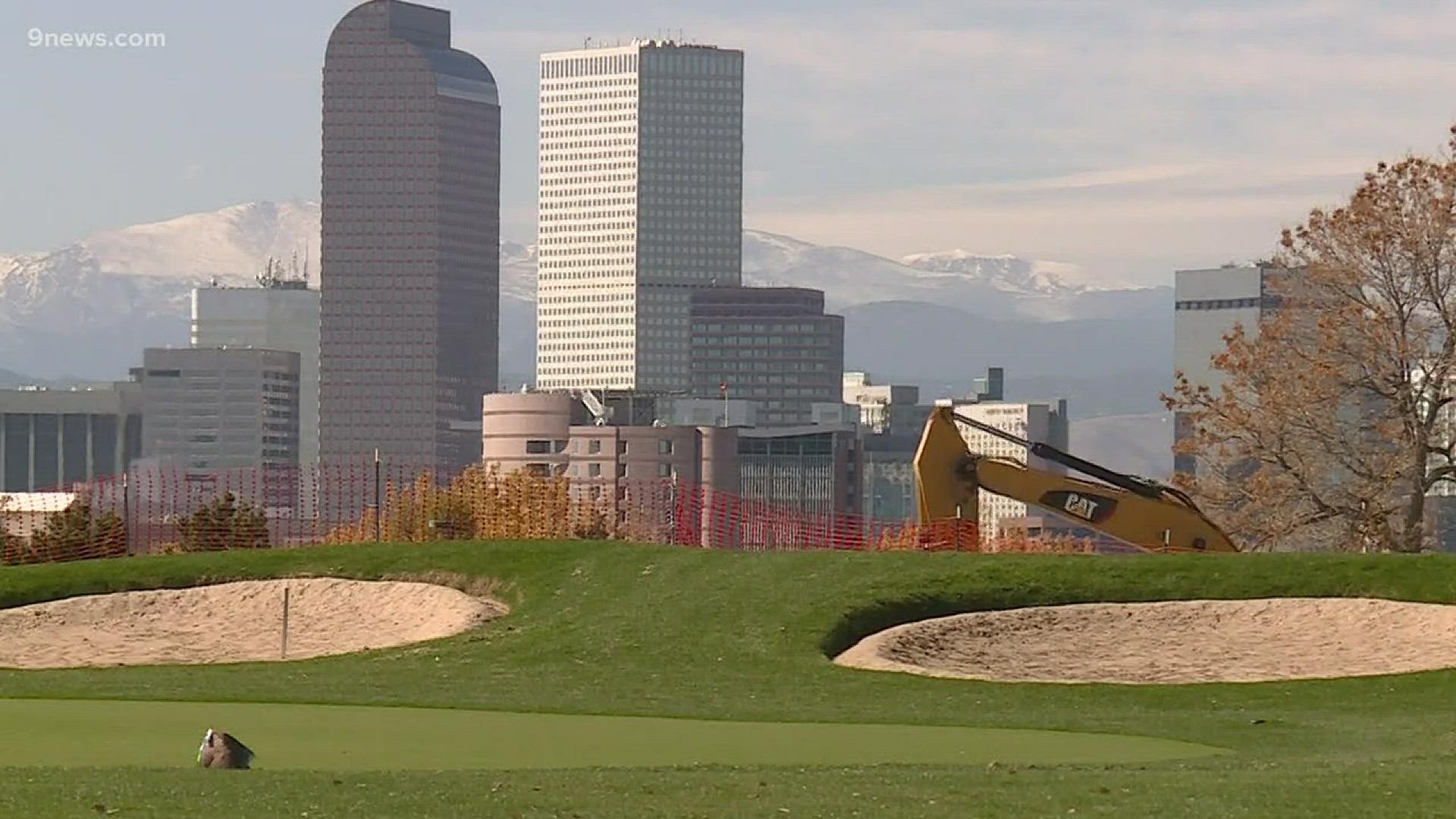The huge makeover at the City Park Golf Course isn’t just to improve the experience for golfers … it’s also meant to prevent the flooding that’s been common in nearby neighborhoods for decades.
That’s because the course lies right in the middle of a flood plain known as the Montclair Basin, according to Denver Public Works. It is one of the few places in Denver where storm water gets trapped with no natural channel to remove it.
“These are areas most at risk for flooding in larger storms, and we are building a system to manage storm water, to control it,” said Nancy Kuhn, a spokesperson with Denver Public Works.
Before Denver was developed, there was a creek that flowed naturally through City Park. In a 1861 surveyors map, it’s called Montclair Creek.


When Denver grew, that creek was buried under the urbanization of the Mile High City. And so, knowingly or not, Denver created a trap for storm water.
In 1933, the city built a brick “backbone” system 72 to 120 inches in diameter made of pipes Kuhn called “undersized and aging.”
Now, that water flow is coming above ground. The local point of the new design is called a forebay, which is basically a retention pond that will also act as a water hazard for golfers teeing off at the 11th and 13th holes on the southwest corner of the course.
They have designed this new golf course to flood in big storms, and they hope it does to spare Denver neighborhoods to the north like Cole, Clayton, and Whittier.
In a 10-year flood event, the water will rise at that forebay and cover some of the fairways, but stay contained to the golf course.
In a 100-year flood event, the flood will rise up covering most of the course on the west end between 23rd and 26th Avenues, leaving just the elevated greens above water.
The design of this new waterway will allow a 10-year flood to drain in just eight hours, and a 100-year flood should drain in about 24 hours.
“So minimally impacting golf while benefiting the neighborhoods north of here with flood protection,” Kuhn said.
They have also installed a new trash vault that will intercept floating debris just before it enters the forebay near 23rd Street and York Avenue. DPW said they will be able to clean out that trap on a regular basis, helping keep the water clean as it moves through town.


Another new feature is a meandering creek channel. DPW said this will allow the grasses to naturally filter and clean the water as it moves through the course on its way to the South Platte River – something that’s a benefit of having an open-air channel as opposed to an underground pipe.
“That’s the best practice. We are doing more and more of this green infrastructure,” Kuhn said.


This regrading of the land will change several of the holes, but perhaps the most noticeable change will be the new clubhouse that they are moving from the northwest corner to an elevated area in the middle of the course.
This will provide some of those famous views of the Denver skyline and the Front Range mountains right from the patio of the clubhouse.
The construction at the City Park golf course is on schedule to finish on May 31, 2019. Then, there will be a two to three month grow-in phase for the turf. The course is scheduled to open for limited play September 2019 and for full operations by Memorial Day weekend 2020.

